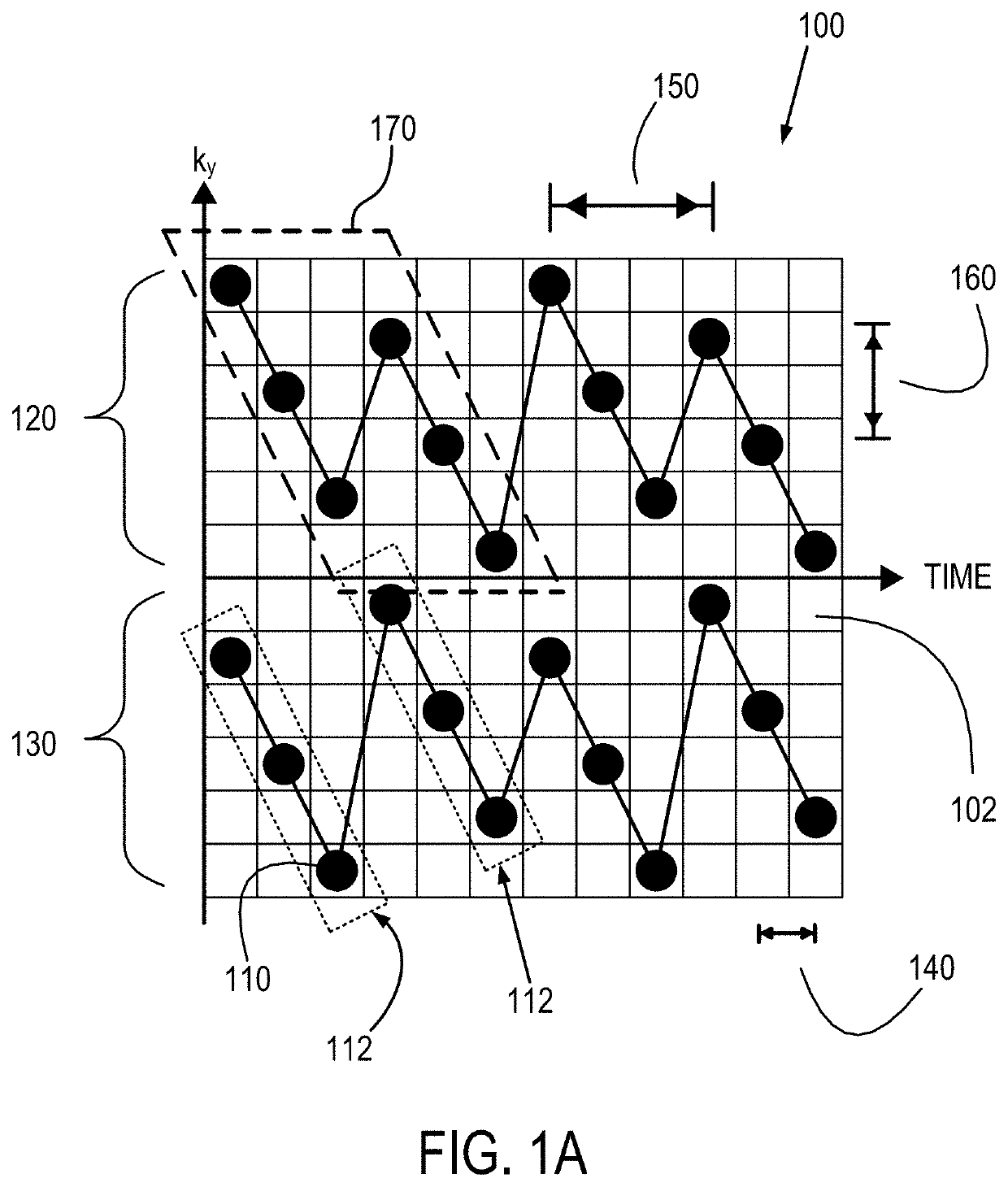Method for echo planar time-resolved magnetic resonance imaging
a magnetic resonance imaging and planar time resolution technology, applied in the field of mr acquisition technique, can solve the problems of limited number of echoes, affecting the quality of images, and limiting the ability to achieve high-quality anatomical and quantitative imaging
- Summary
- Abstract
- Description
- Claims
- Application Information
AI Technical Summary
Benefits of technology
Problems solved by technology
Method used
Image
Examples
Embodiment Construction
[0022]Described here are systems and methods for magnetic resonance imaging that addresses the geometric distortions and blurring common to conventional echo planar imaging (“EPI”) sequences by using an echo planar time-resolved imaging (“EPTI”) scheme. The systems and methods described in the present disclosure implement an accelerated sampling of a hybrid space spanned by the phase encoding dimension and the temporal dimension. As one example, the hybrid space is spanned by the k dimension in k-space and the temporal dimension, t, and thus may be referred to as k-t space. In general, each EPTI shot covers a segment of this hybrid space using a zigzag trajectory with an interleaved acceleration in the phase-encoding direction. The systems and methods described in the present disclosure also provide temporal signal evolution information across the EPI readout window.
[0023]The systems and methods described here can be implemented for anatomical imaging, multiple-contrast imaging, qua...
PUM
 Login to View More
Login to View More Abstract
Description
Claims
Application Information
 Login to View More
Login to View More - R&D
- Intellectual Property
- Life Sciences
- Materials
- Tech Scout
- Unparalleled Data Quality
- Higher Quality Content
- 60% Fewer Hallucinations
Browse by: Latest US Patents, China's latest patents, Technical Efficacy Thesaurus, Application Domain, Technology Topic, Popular Technical Reports.
© 2025 PatSnap. All rights reserved.Legal|Privacy policy|Modern Slavery Act Transparency Statement|Sitemap|About US| Contact US: help@patsnap.com



